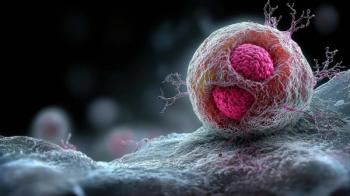
Pharmacy Practice in Focus: Oncology
- October 2023
- Volume 5
- Issue 6
AI and Precision Medicine Are Changing What’s Possible for Breast Cancer Treatment
Ongoing studies utilizing large-scale health databases that incorporate environmental, lifestyle, biological, and phenotypic data may provide insight that leads to better cancer prevention and treatment.
October is Breast Cancer Awareness Month, and it can be beneficial during this month to take account for both the gains achieved toward improving the lives of individuals affected by this disease and the remaining challenges to overcome. One such challenge facing oncology professionals working in the breast cancer field is the increasing number of young individuals diagnosed with breast cancer. In a study published in August 2023 in JAMA Network Open on the pattern of cancer incidence among individuals younger than 50 years in the United States from 2010 to 2019, breast cancer accounted for the highest number of cancer diagnoses. Of importance, the number of cases increased by 7.70% over that period, second only to the highest rate of increasing incidence of gastrointestinal malignancies.1
Approximately 1 in 10 women diagnosed with breast cancer is 45 years or younger (early-onset breast cancer). Although several risk factors for developing breast cancer have been well defined, we struggle to provide satisfactory responses to questions surrounding “why” for patients diagnosed with early-onset breast cancer. Most young patients without established risk factors will not have undergone screening mammography and therefore may not have benefited from early detection strategies. And although the importance of breast self-awareness is emphasized, major society guidelines such as the American Cancer Society no longer recommend monthly routine breast self-examinations.2
However, artificial intelligence (AI) technologies could lead to models that might predict early-stage breast cancer for patients in the absence of established risk factors. AI algorithms are routinely utilized in methodologies involved in diagnosis, prognosis, and treatment determinations for patients with cancer. Studies published this year established potential roles for AI-supported mammography to increase breast cancer detection rates; however, there is much work to be done to determine how and if AI could aid and/or supplement radiologists in clinical settings. AI models have also shown to be more accurate in tumor removal in breast cancer surgery and have been incorporated in breast pathology, not only improving accuracy but also predicting cancer prognosis and response to therapy. AI offers promise in improving breast cancer screening and predicting cancer risk, thereby also reducing health disparities. However, in patient populations for whom mammography is not currently recommended, it remains unclear whether AI could provide insight regarding cancer risk factors beyond those traditionally recognized.
The Breast Cancer Risk Assessment Tool (also known as the Gail Model), has been tremendously useful for providing patients with individualized probabilities of developing breast cancer and identifying candidates that might benefit from chemoprevention strategies. However, the accuracy of this and related models in certain populations, and in recognizing advances in knowledge of pathologic, genomic, clinical, and other factors regarding breast cancer risk, are underutilized. Databases that incorporate food and dietary patterns and other genomic and lifestyle factors could lead to better outcomes for our patients.
AI and precision medicine applications have the potential to and are improving treatment outcomes for patients diagnosed with breast cancer and other malignancies. These applications are exciting and provide potential opportunities for decreasing the cancer burden in young adults. Ongoing studies utilizing large-scale health databases that incorporate environmental, lifestyle, biological, and phenotypic data may provide insight that leads to better cancer prevention and treatment.
About The Author
Lisa E. Davis, PharmD, FCCP, BCPS, BCOP, is the editor-in-chief of Pharmacy Times Oncology Edition. Davis holds positions as a clinical pharmacist in early-phase clinical trial and breast cancer programs at the University of Arizona (Arizona) Cancer Center in Tucson and as a clinical professor of pharmacy practice and science at the Arizona R. Ken Coit College of Pharmacy. Davis also sits on the Hematology/Oncology Pharmacy Association Board of Directors and is a member of the Cancer Prevention and Control Program and scientific review committee at the Arizona Cancer Center.
References
- Koh B, Tan DJH, Ng CH, et al. Patterns in cancer incidence among people younger than 50 years in the US, 2010 to 2019. JAMA Netw Open. 2023;6(8):e2328171. doi:10.1001/jamanetworkopen.2023.28171
- Frequently asked questions about the American Cancer Society’s breast cancer screening guideline. American Cancer Society. Updated January 24, 2019. Accessed October 6, 2023. https://www.cancer.org/cancer/types/breast-cancer/frequently-asked-questions-about-the-american-cancer-society-new-breast-cancer-screening-guideline.html#:~:text=The%20ACS%20no%20longer%20recommends,for%20women%20of%20any%20age
Articles in this issue
Newsletter
Stay informed on drug updates, treatment guidelines, and pharmacy practice trends—subscribe to Pharmacy Times for weekly clinical insights.























































































































































































































